Ornament & Sculpture: New Works by Dorothea Prühl
November 1, 2020–February 21, 2021
CODA Museum, Apeldoorn, The Netherlands
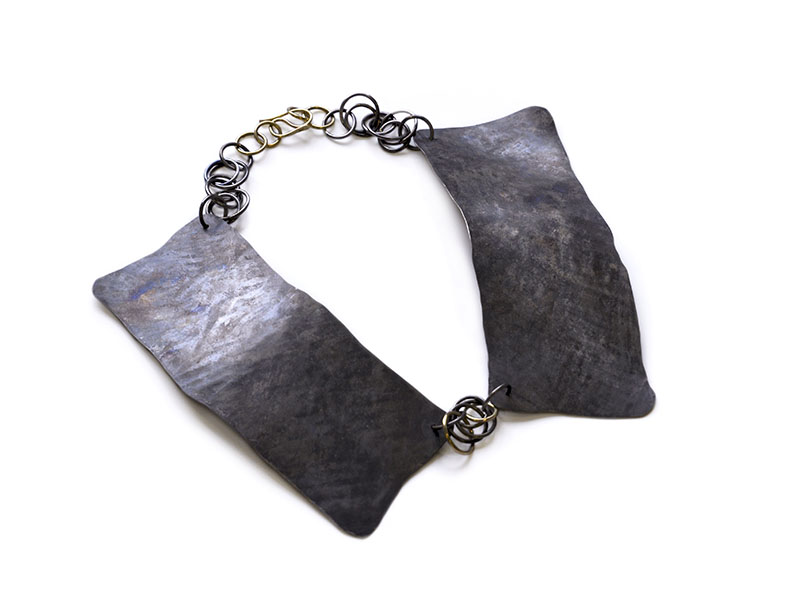
In December 2019, Dorothea Prühl was awarded the Art Prize of the Federal State of Saxony-Anhalt, in Germany. The Kunstmuseum Moritzburg, in Halle, Germany, had wanted to hold a retrospective exhibition of Prühl’s work for some time, so the award was the perfect reason to finally implement planning one. The exhibition Ornament and Sculpture: New Works by Dorothea Prühl opened at the Kunstmuseum Moritzburg in March 2020 and has now traveled to CODA Museum, in Apeldoorn, the Netherlands. After this, the exhibition will be displayed at the Gerhard-Marcks-Haus, in Bremen, Germany, from March 21–June 6, 2021, in what will be the final destination of the traveling show. This exhibition review is about the current exhibition at CODA Museum.
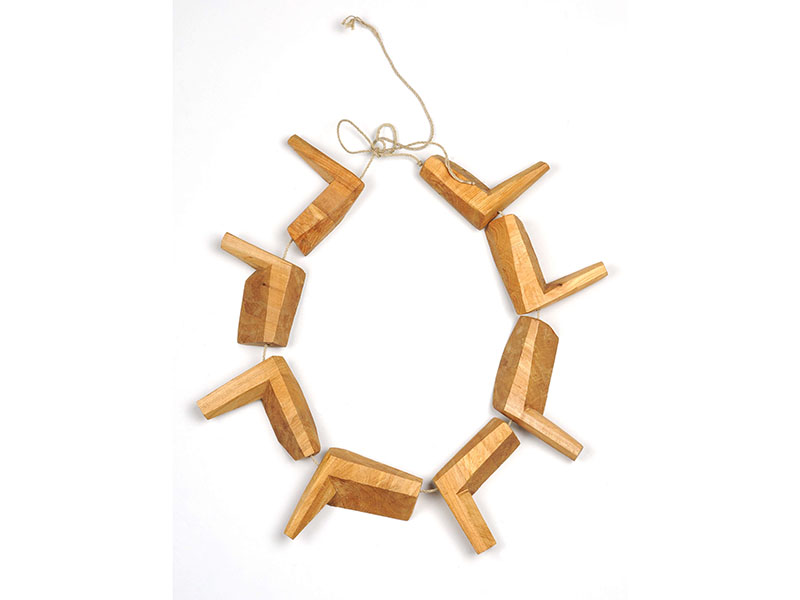
Ornament and Sculpture: New Works by Dorothea Prühl gives an overview of most of her work from the 1990s to the present day. It’s also accompanied by a newly released eponymous monograph covering Prühl’s entire oeuvre of a few more than 100 pieces.
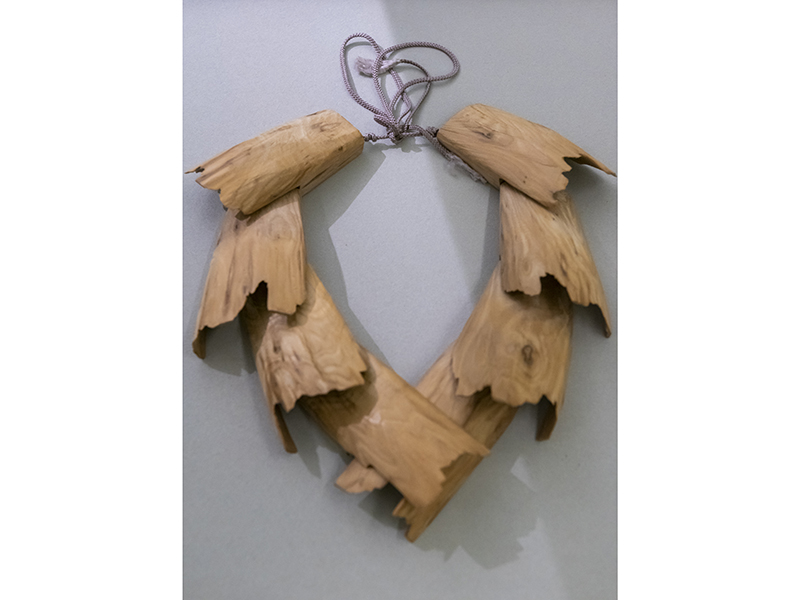
Prühl’s jewelry is famous for its sculptural qualities and abstract representation of animal or floral forms. She mostly works with gold, steel, aluminum, titanium, and wood, from which she creates elements that she composes together into necklaces, sometimes brooches or earrings. The various elements in her necklaces represent the same things: frogs, fishes, birds, or swans, always elements inspired by nature. Some of her latest necklaces are titled Zwei Grosse Vögel (Two Large Birds), 2019, and Grosse Fische (Big Fishes), 2018, both shown below.

Prühl sometimes abstracts or reduces the original shapes in such a way that the subject named in the title of the piece is hard to recognize at first glance. In the images above, most people would find the wooden elements in Zwei Grosse Vögel easier to recognize as birds than the titanium elements of Grosse Fische as fishes. The shapes of the elements in Grosse Fische seem to be reduced to such a point that the shapes only resemble the movement of fish in water.
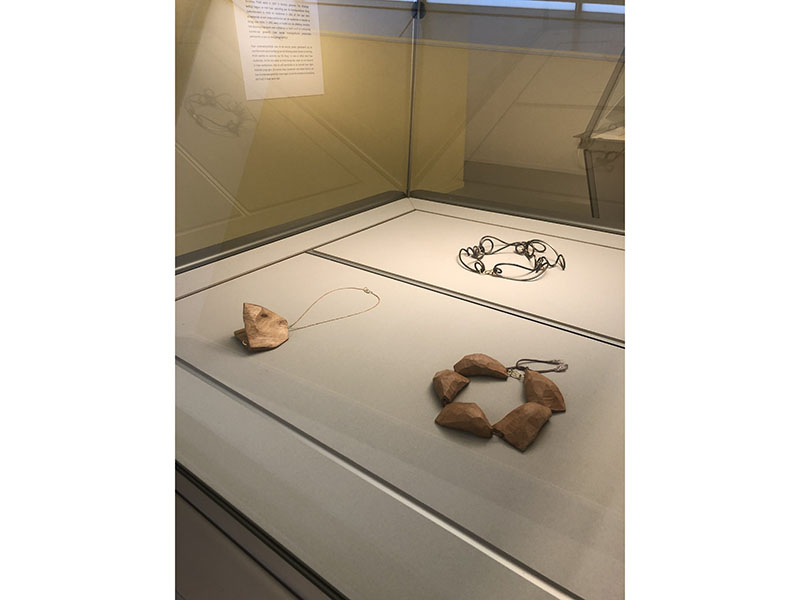
Prühl never makes sketches of her pieces in advance, but always works directly with the material. Besides her talent for creating wonderful abstract forms, Prühl also manages to compose the elements together in a way that the piece fits the body perfectly. Some people would consider her work “large scale,” but Prühl has the incredible skill to create works that rest on the body so well that it seems as if they were supposed to be there.

The exhibition at CODA Museum contains various pieces that come from CODA’s own permanent collection. The wall text notes that Prühl is classified as one of the core artists in the CODA Museum collection, meaning that the institution acquires her work regularly to make sure its collection represents the development of her work over time. The other pieces in the show mostly came from collections created by important collectors of contemporary jewelry, such as the Collection of Deedie Rose (USA) and the Rotasa Collection Trust (USA). The exhibition does not travel with its own displays but is instead set up in the museum’s own showcases. In CODA’s case, the museum made use of the “satellite” showcases designed by Ward Schrijver that it often uses for jewelry exhibitions.

In the first vitrine, seen above right, four pieces are displayed—Tiere (Animals), Grosse Winkel (Big Hooks), Zwei Reifen (Two Circles), and Zickzack (Zigzag)—two of them with their boxes. This vitrine felt very packed compared to the other ones in the exhibition, since the other vitrines displayed only two or three pieces, mostly without their boxes. Prühl always creates wonderful packaging for each of her pieces, but it was not clear to me why only a few of the pieces in the show were displayed with their boxes. It was nice to see some of them, but I didn’t really understand why they were there, especially since the boxes weren’t mentioned on the handout giving the details of the work, nor were they mentioned in the wall texts.
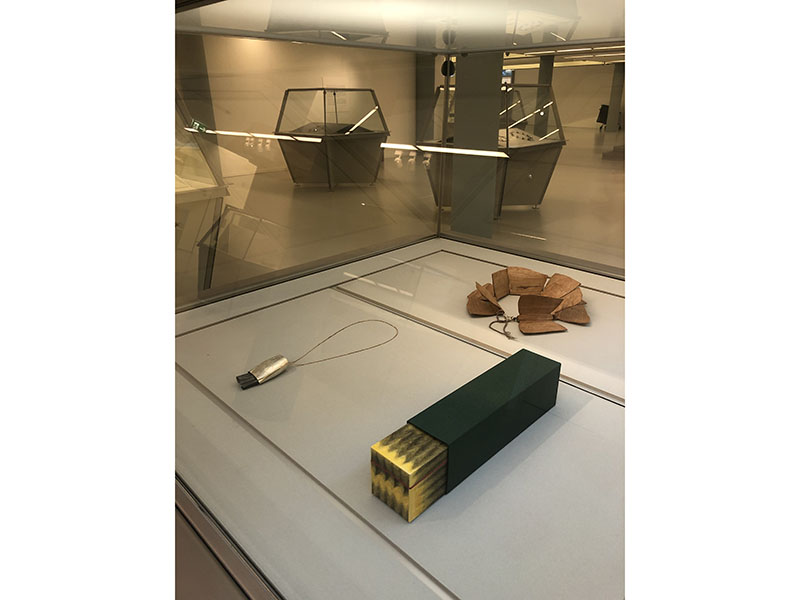
Another thing that struck my eye about vitrine 1 was that Zickzack (Zigzag),1999, below left, was displayed in the same way as Stern (Star), 1999, below right, in the monograph. Both pieces are composed of golden angles, but Zickzack is composed of six elements while Stern is composed of five. On page 120 of the monograph, Prühl is quoted: “I omit one part and a completely different image emerges.”[1] Knowing how precise Prühl is about laying down her work (I watched her set up the exhibition So Nah So Fern, at Galerie Marzee in 2017), this mix-up of her pieces felt like a bit of a shame.
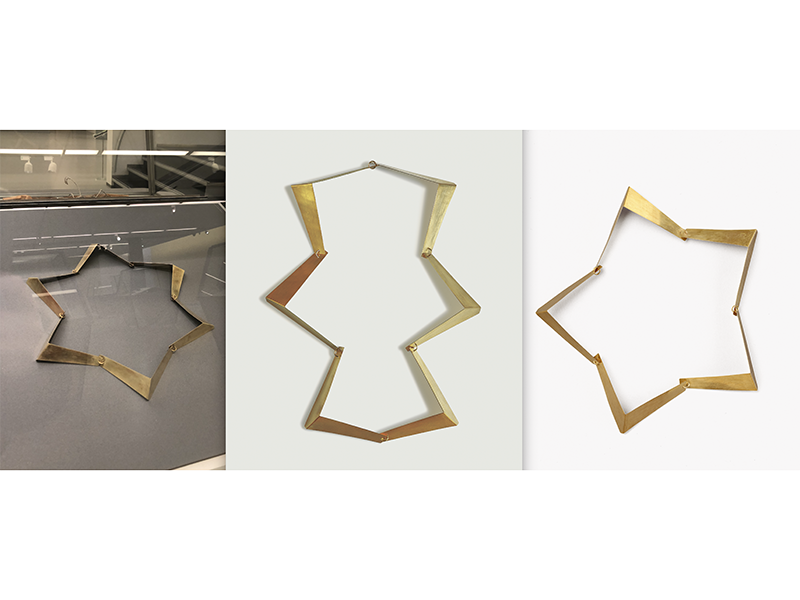
As I mentioned above, the other vitrines showed two or three necklaces, so to me there wasn’t a clear balance of the division of pieces in the different displays. In the accompanying monograph, text appears with each piece to provide information about the genesis of that work or describe the artist’s inspiration for it. Similar information would have been wonderful to have in the show, next to the work or in the handout, to give visitors insight into Prühl’s mind. There were different wall texts in the show, but since the exhibition is displayed in one large space you must leave the vitrines to get a closer look at the wall texts. The handout only stated which piece was on display in which vitrine, with the titles, materials, year of making, and the name of the collection from which each piece originated.

I was delighted to find my favorite piece by Prühl in the exhibition: Vogel in der Luft (Birds in the Air), 2007, shown above. This necklace is made of golden circles in which three stainless steel bird-shaped elements are interwoven. Despite the heavy materials, the necklace feels light and expresses the freedom of birds flying around in the air.
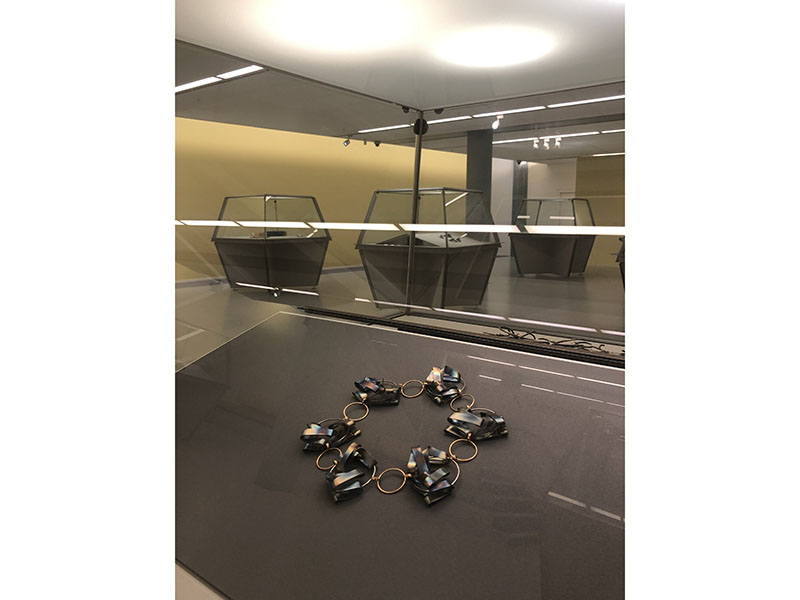
It’s very unfortunate that the COVID-19 pandemic prevented the show from being seen by many more visitors, due to government restrictions and lockdowns. I have deep respect for the museum employees who made this show happen during this extraordinary time, when government regulations can change in a heartbeat. I’m very happy that I had the chance to visit this exhibition at just the right time, since a few weeks after my visit the Netherlands went into the most severe lockdown since the beginning of the pandemic and museums had to close their doors once again. I was very pleased to hear, just before submitting this review, that the exhibition has been extended to February 21, 2021.
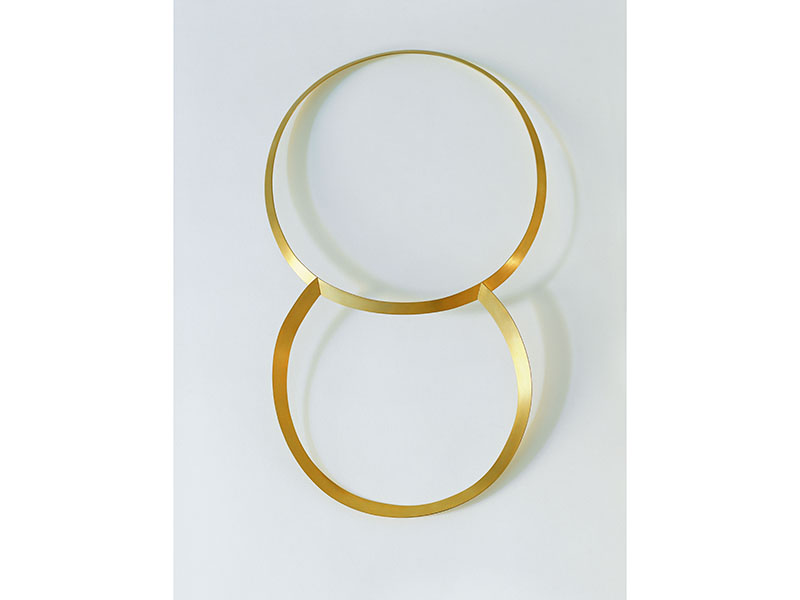
[1] Dorothea Prühl, Ornament and Sculpture (Halle [Saale], Germany, Dorothea Prühl, 2020): 120.




